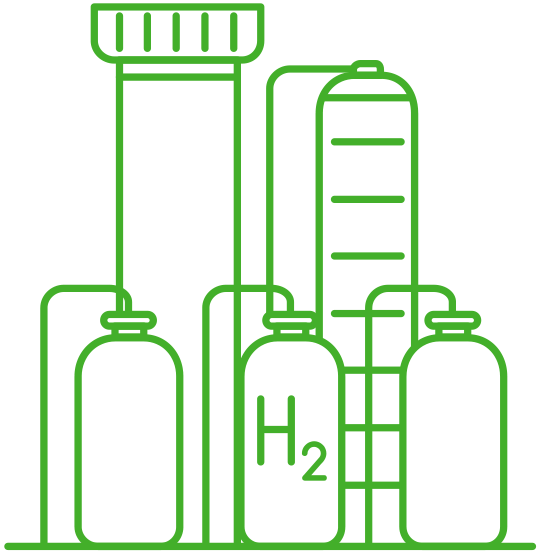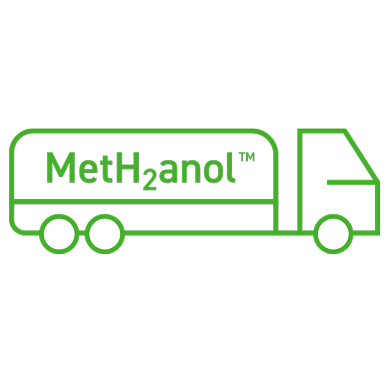
Diesel and petrol
Easy to transfer directly from the pump to vehicle or ship, from jerry cans or barrels, or directly from road tanker or bunkering systems.
Requires no special systems other than generally familiar routines and normal caution when refilling fuel.

Methanol
Liquid at normal temperature and pressure.
Methanol is distributed and stored/transferred in the same way as petrol and diesel oil. No pretreatment such as compression is required.
A ship can store methanol in bulkheads in the same way as diesel oil.

Liquefied hydrogen
Hydrogen liquefies at -253° and must be stored in special rigid and volume-intensive tanks.
Although liquefaction by cooling represents the most volume-efficient way to store pure hydrogen, it is a very complex, energy-intensive and expensive method.

Compressed hydrogen
Storing compressed hydrogen on ships requires a large volume and rigid, space-intensive tank systems. Refilling solutions for this fuel call for strict and expensive safety routines, precautionary zones, and separation from surrounding buildings and infrastructure.

Ammonia
Ammonia is produced through a synthesis process involving hydrogen and nitrogen.
This substance is highly toxic and requires substantial and expensive precautions with safety barriers. It must be cooled to -33°C and compressed before distribution.
The global commitment to using hydrogen technology represents a very important contribution to winning the climate race. But further development and safety approvals related to infrastructure for and distribution of liquefied (LH2) and gaseous (CH2) hydrogen will be very demanding, expensive and time-consuming.
This means that maturing and demonstrating refuelling or bunkering solutions for the first ships, before procedures and regulations are developed, also involve a lengthy process for many years to come. Unfortunately, therefore, rolling out the infrastructure will fail to progress at the desired pace. The same applies for ammonia.
Methanol represents a highly relevant alternative for distributing hydrogen in large volumes required (as an alternative carrier of this commodity). That is because an established distribution system and sales volume already exist in the petroleum industry. Combined with reformer technology, the hydrogen is not liberated until it reaches the point of use. Safety procedures can therefore be much simpler.
A number of risk factors are thereby eliminated – hydrogen is made easily available and the desired environmental effect can be secured more quickly.
Virtually unlimited opportunities and demand exist for climate-neutral biomethanol. It can be used in electricity generation, as an ingredient in a number of industrial production processes (chemical input factor) and as a transport fuel on land and at sea.

Power generation

Industry

Household use –
heating and cooking

Transport